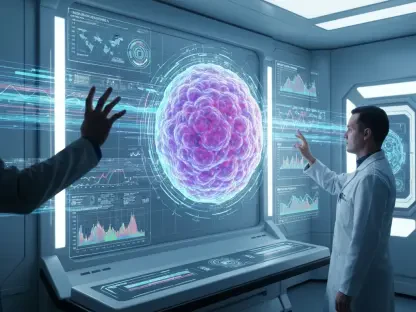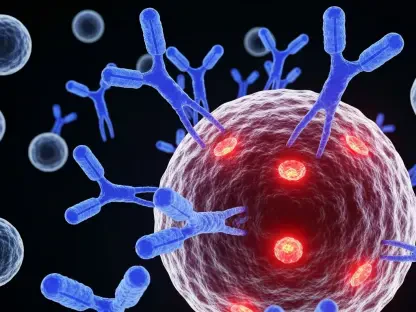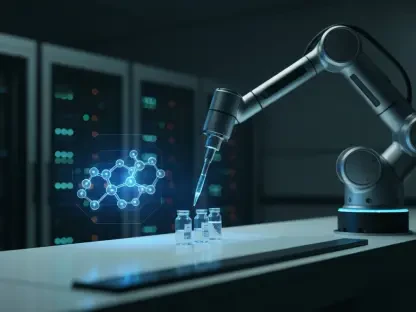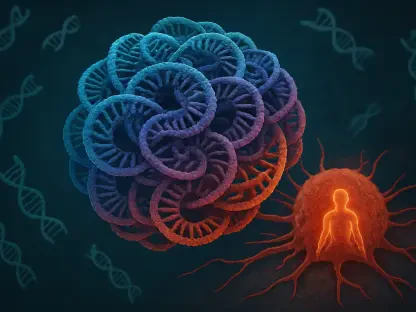In the dynamic world of biopharmaceutical innovation, Ivan Kairatov stands out as an expert, particularly in the area of immunotherapy. With substantial experience in research and development, Ivan has been at the forefront of exploring the molecular intricacies of CAR-T cell therapy. This groundbreaking treatment has offered new hope for patients battling certain types of cancer. In this interview, we delve into the unique aspects of CAR-T cell therapy, key findings from Ivan’s research, and what the future might hold for this exciting field.
Can you explain what CAR-T cell therapy is and how it differs from other cancer treatments?
CAR-T cell therapy is quite a revolutionary approach in cancer treatment. Unlike traditional methods like chemotherapy or radiation, which target the tumor more broadly, CAR-T therapy involves genetically modifying a patient’s T-cells to better identify and attack cancer cells. These engineered cells are designed to hone in on specific proteins present on the surface of cancer cells, making them highly targeted and potentially more effective in battling certain blood cancers.
What motivated you to investigate the molecular mechanisms of CAR-T cell therapy?
The motivation primarily stemmed from the gaps in our understanding of how CAR-T cells function at a molecular level. While we’ve seen incredible success in some patients, others don’t respond as well. Understanding the signaling pathways and molecular effectors involved can help us improve the therapy and tailor it better to individual needs. This scientific curiosity and the potential for significant impact on patient outcomes really drove the research forward.
Could you describe the main objectives of your study?
Our study aimed to map out the molecular landscape that underlies CAR-T cell functionality. We wanted to identify key proteins and pathways that are crucial for the success of the therapy. By doing so, we hoped to uncover targets for optimizing the therapy, improving patient response rates, and possibly reducing adverse effects.
How did you go about identifying the key proteins and signaling pathways involved in CAR-T cell therapy?
We conducted a deep dive into existing literature and utilized databases like PubMed and Scopus to gather existing knowledge on molecules implicated in CAR-T cell signaling. This involved collaborating with experts and analyzing data from previous studies. Our methodical approach was to ensure that we could clearly pinpoint the molecular players that could alter the therapy’s efficacy.
You mention the term “molecular effectors.” Could you explain what that means in the context of your research?
Molecular effectors are essentially molecules that play a pivotal role in cellular responses. In the context of CAR-T cell therapy, these are typically proteins that are involved in recognizing and responding to the cancer cells, facilitating the immune response, or transmitting signals that drive cellular processes. Identifying these effectors can illuminate how CAR-T cells navigate and disrupt cancer cells.
How did you utilize databases like PubMed and Scopus in your research process?
These databases were invaluable for accessing a vast amount of peer-reviewed research, covering advancements and findings related to CAR-T cells. We extracted data regarding protein interactions, signaling pathways, and past clinical outcomes. This evidence base was crucial for grounding our research in established scientific knowledge and identifying gaps that our study could fill.
Could you elaborate on the 14 proteins you identified and their classification into categories like cytokines, kinases, receptors, proteases, and chemical messengers?
We identified 14 key proteins vital to the functioning of CAR-T cells. These were classified into several categories: cytokines like interferon and gamma interferon play a role in modulating immune responses; kinases such as LCK, ITK, and JAK2 are essential for signal transduction; receptors like CD80 and CD20 are crucial for T-cell activation; and proteases and chemical messengers like Granzyme B and TNF-α are involved in executing cell death and orchestrating immune signaling respectively.
How do proteins like interferon, CCL3, and gamma interferon contribute to the effectiveness of CAR-T cell therapy?
These proteins function as cytokines, and they are key in regulating the immune response. Interferons, particularly gamma interferon, are critical for activating immune cells and enhancing their ability to target cancer cells. CCL3 plays a role in recruiting additional immune cells, amplifying the therapeutic attack on the tumor.
What role do kinases like LCK, ITK, JAK2, and B-Raf play in the activation of CAR-T cell therapy?
Kinases are enzymes that are crucial for the activation and signaling of CAR-T cells. For instance, LCK, ITK, and JAK2 facilitate the signaling pathways necessary for T-cell activation and proliferation. They essentially help transmit signals within the cell that determine how effectively CAR-T cells can attack cancer cells, making them pivotal to the therapy’s success.
Can you explain the importance of receptors such as CD80 and CD20 in the context of your findings?
Receptors like CD80 and CD20 are integral to how CAR-T cells recognize and attach to cancer cells. CD20 is often targeted in blood cancers, and having receptors geared to recognize such proteins can enhance the specificity and efficiency of the CAR-T cells. CD80 plays a part in co-stimulatory signaling, which is crucial for the full activation of T-cells, ensuring they can perform their cancer-fighting functions optimally.
In what ways could proteases and chemical messengers like Granzyme B and TNF-α influence therapy outcomes?
Granzyme B is a protease that triggers apoptosis in cancer cells, directly leading to their destruction. Meanwhile, TNF-α is a cytokine that can induce inflammation, stimulate further immune reactions, and lead to apoptosis. These elements are vital for ensuring CAR-T cells effectively destroy cancer cells and sustain the immune response required for durable treatment effects.
How does the use of proteomics enhance our understanding of changes in key molecules related to CAR-T cell therapy?
Proteomics allows us to study the structure and functions of proteins within cells, giving a clear picture of how CAR-T cells operate at a molecular level. By analyzing the proteins involved in CAR-T cell therapy, we can understand the dynamics and interplay of various molecules, identifying possible areas for therapeutic optimization and adaptation.
You mentioned interferon gamma and IL2 as surrogate biomarkers. How could these be useful in addressing some of the challenges of CAR-T cell therapy?
Interferon gamma and IL2 could potentially serve as surrogate biomarkers to predict and measure the therapeutic response of CAR-T cell therapy. Monitoring these biomarkers might help us gauge the effectiveness of the treatment early on and adjust the therapy accordingly to improve efficacy and minimize adverse effects.
How do recent advances in mass spectrometry contribute to your research?
Mass spectrometry has revolutionized how we analyze proteins by allowing us to measure changes in protein abundance, modifications, and interactions at a high resolution. These insights are vital for understanding the molecular changes that occur in CAR-T cells during therapy, facilitating the identification of key proteins and pathways involved in therapy success.
What future research directions do you see based on your findings?
Our findings open up several exciting avenues for future research. Primarily, they lay the groundwork for further exploration of the identified proteins and pathways as potential targets for drug development. Additional studies could focus on understanding patient-specific responses to improve personalized treatment strategies. Moreover, developing techniques to mitigate resistance and adverse effects could be pivotal.
How can the insights from your study potentially lead to improved therapies for patients?
The insights could lead to more tailored and effective CAR-T cell therapies by identifying new biomarkers and molecular targets for enhancing treatment efficacy. Such advancements could improve patient selection, reduce unwanted side effects, and ultimately increase survival rates, making CAR-T therapy accessible and viable for a wider range of patients.
Can you discuss any potential challenges or limitations encountered during your research?
One significant challenge was the complexity and variability inherent to biological systems. Identifying consistent biomarkers across diverse populations can be daunting. Another limitation was ensuring comprehensive data coverage, as available literature might not capture every nuance of molecular interactions. These are areas we continue to address to ensure our findings are robust and applicable.
How does your research at the University of São Paulo and funding from FAPESP support your work in CAR-T therapy?
The University of São Paulo provides a fertile environment for research collaboration and access to state-of-the-art facilities crucial for our work. FAPESP’s funding is vital as it supports our innovative projects that might not initially seem commercially viable. This empowers us to push scientific boundaries and develop therapies that could potentially redefine cancer treatment paradigms.
What implications do your findings have for the future development of CAR-T cell therapy?
Our findings could provide a foundation for creating more effective CAR-T constructs by identifying novel molecular targets and refining prediction models for therapy outcomes. We hope this will lead to more personalized treatment approaches, increase the range of cancers treatable with CAR-T cells, and enhance long-term responses while minimizing adverse effects.
Are there any particular findings from your research that surprised you or challenged existing beliefs about CAR-T cell therapy?
The diversity and complexity of molecular effectors involved in CAR-T cell therapy were particularly surprising. We anticipated certain proteins to be involved, but the extensive network and interplay present in these cells suggest that existing models may not fully capture the intricacies of CAR-T activity. This challenges us to rethink how we design and implement this promising therapy.









